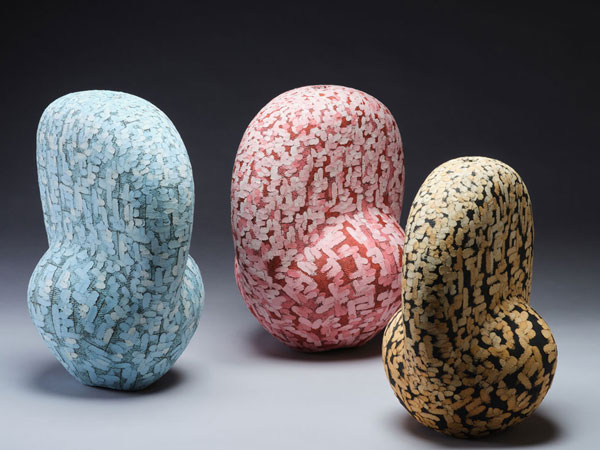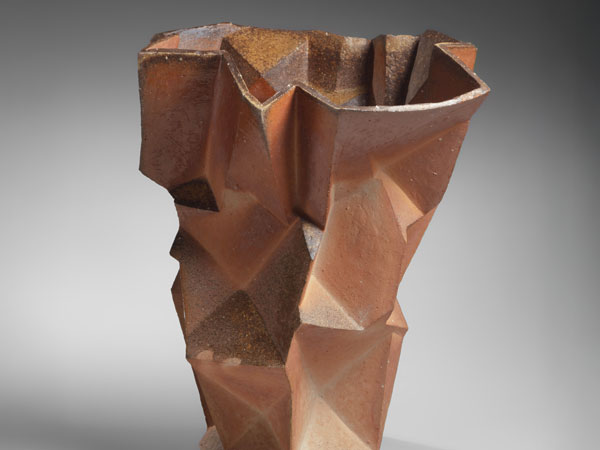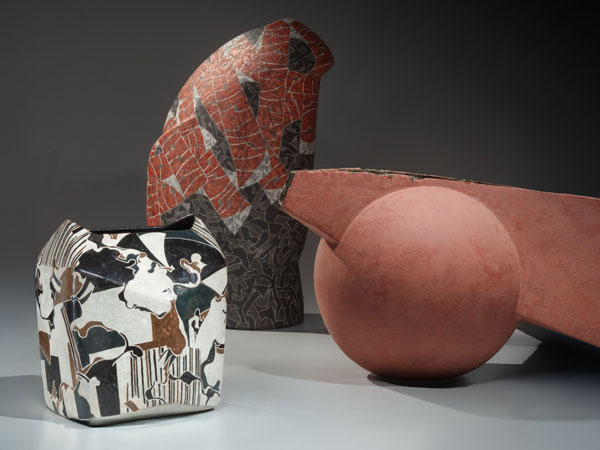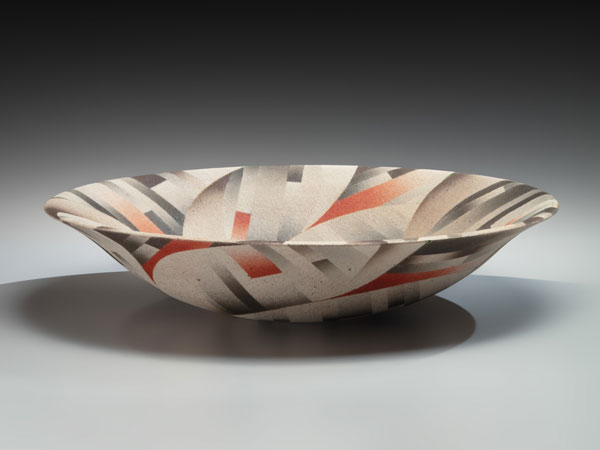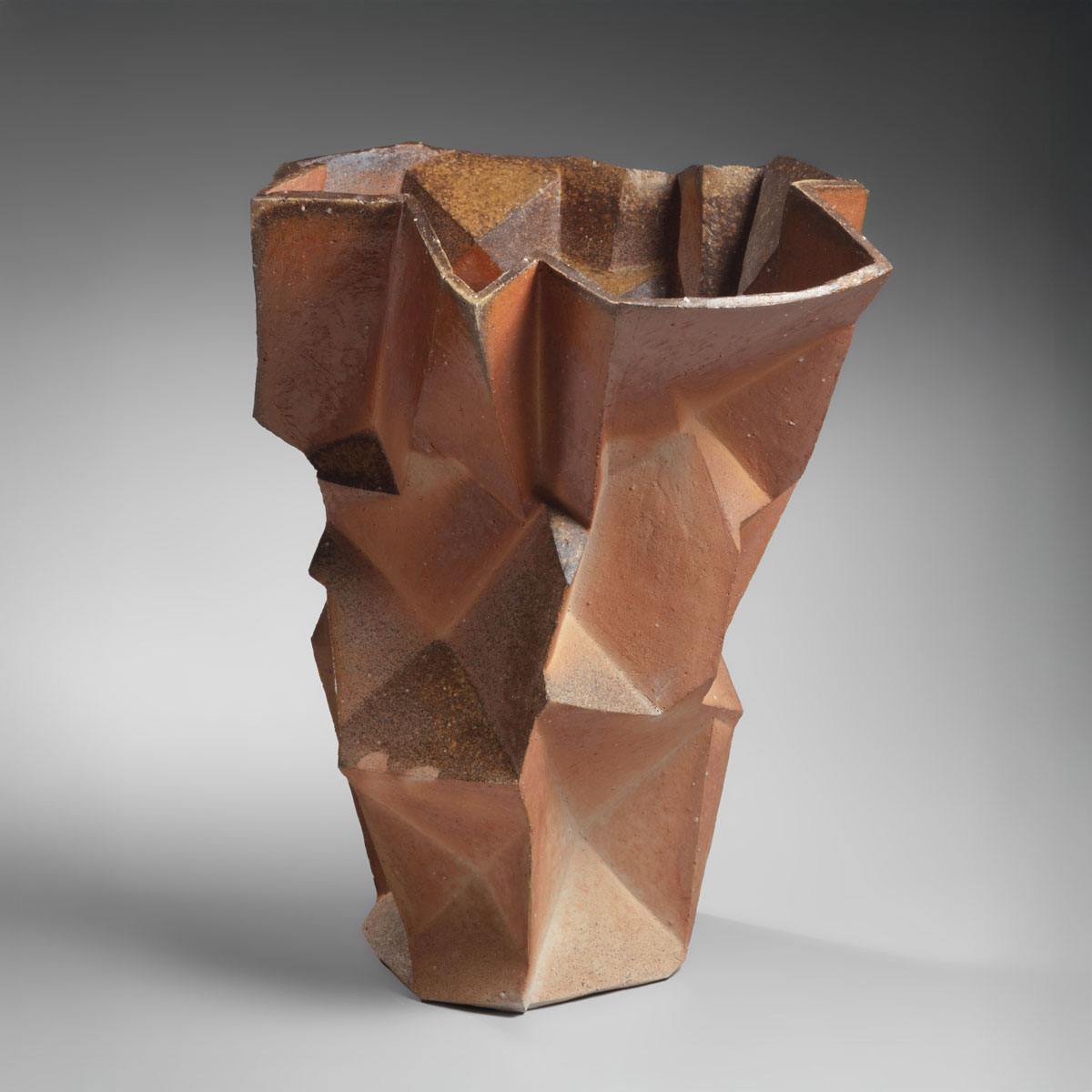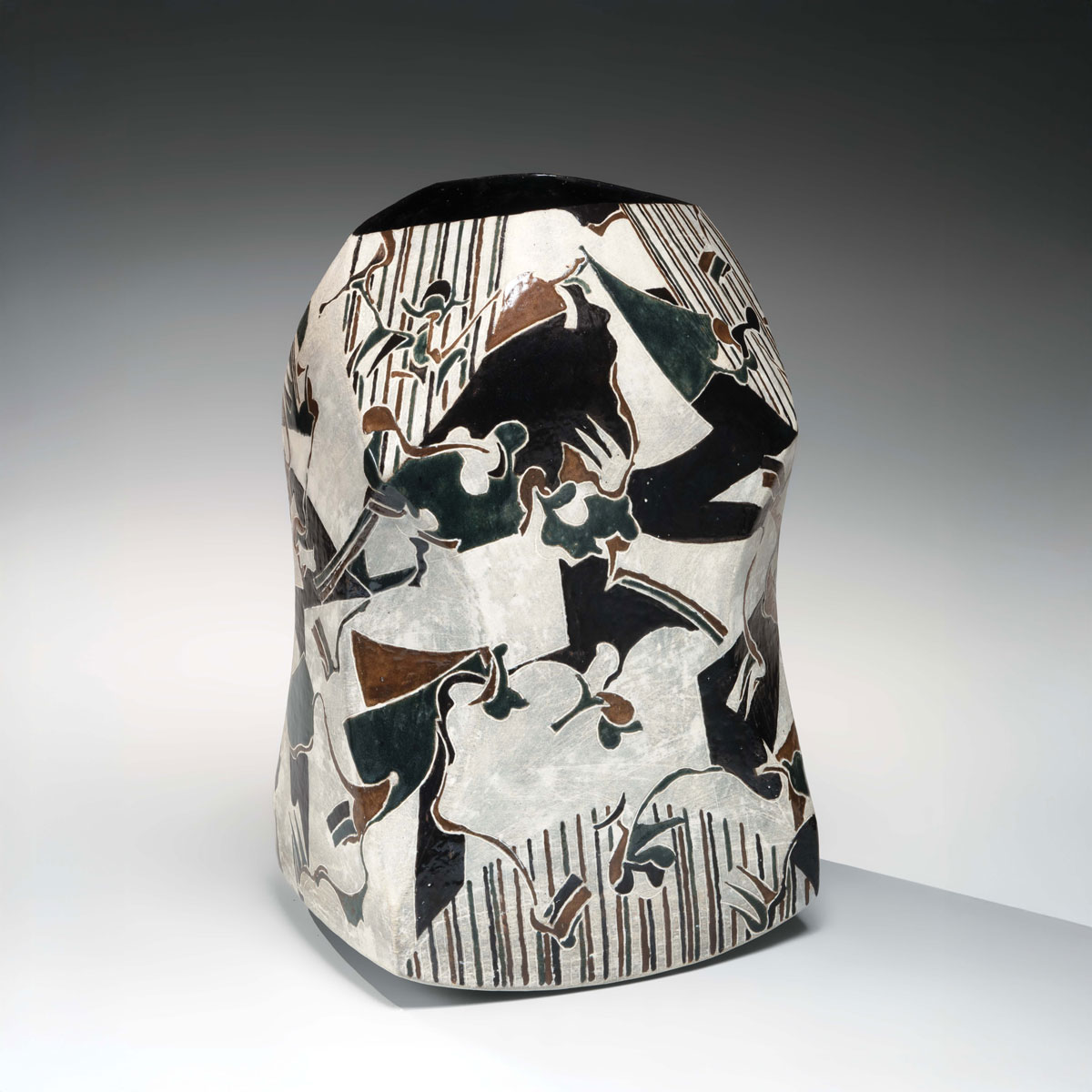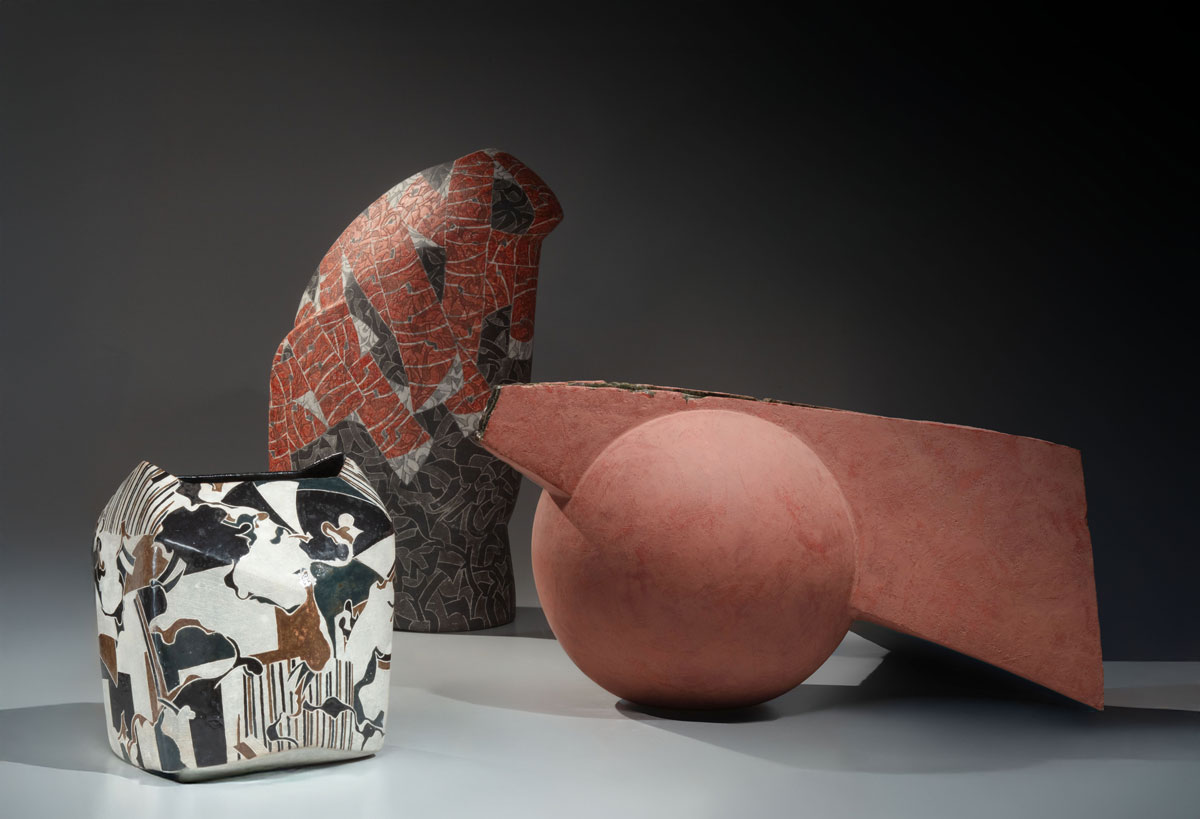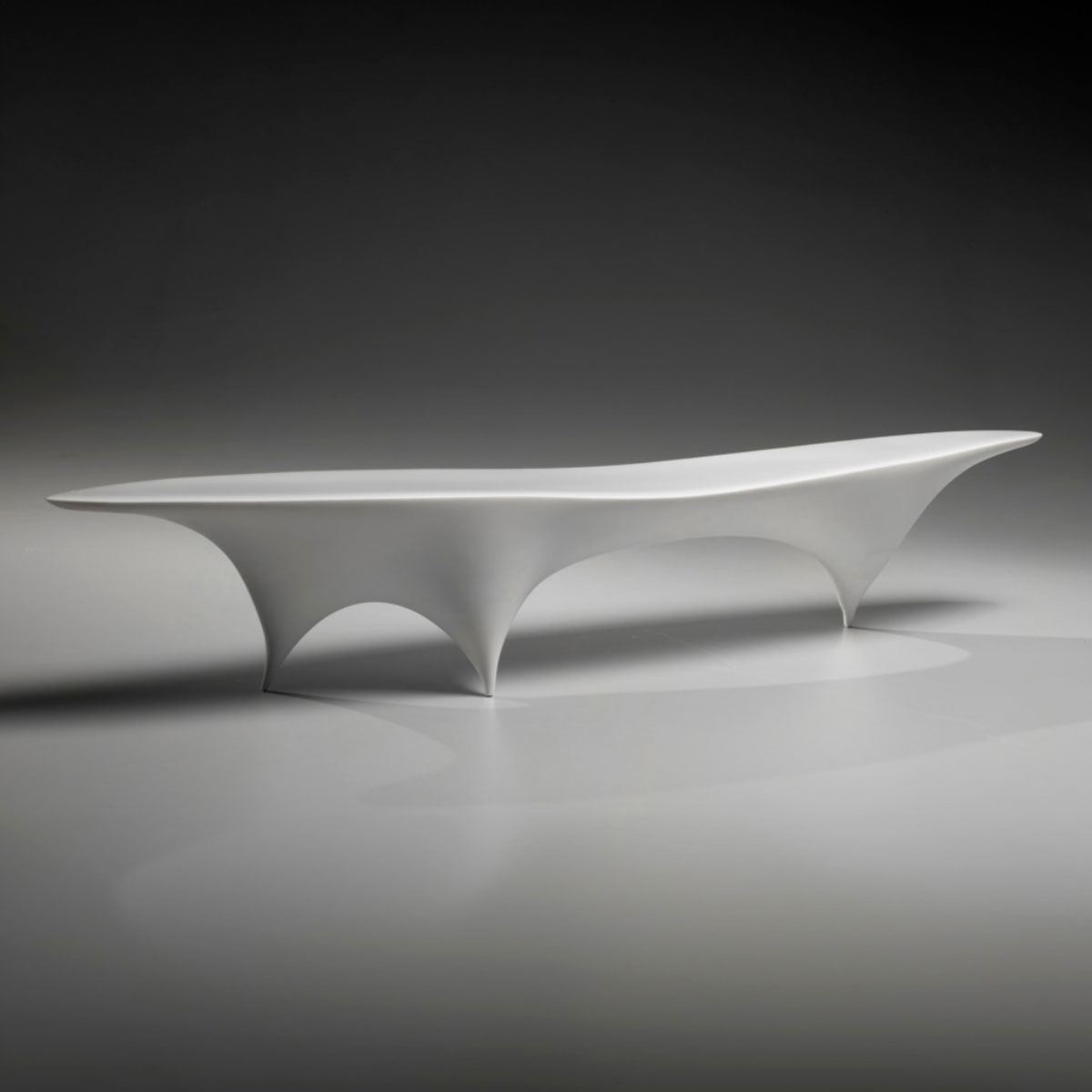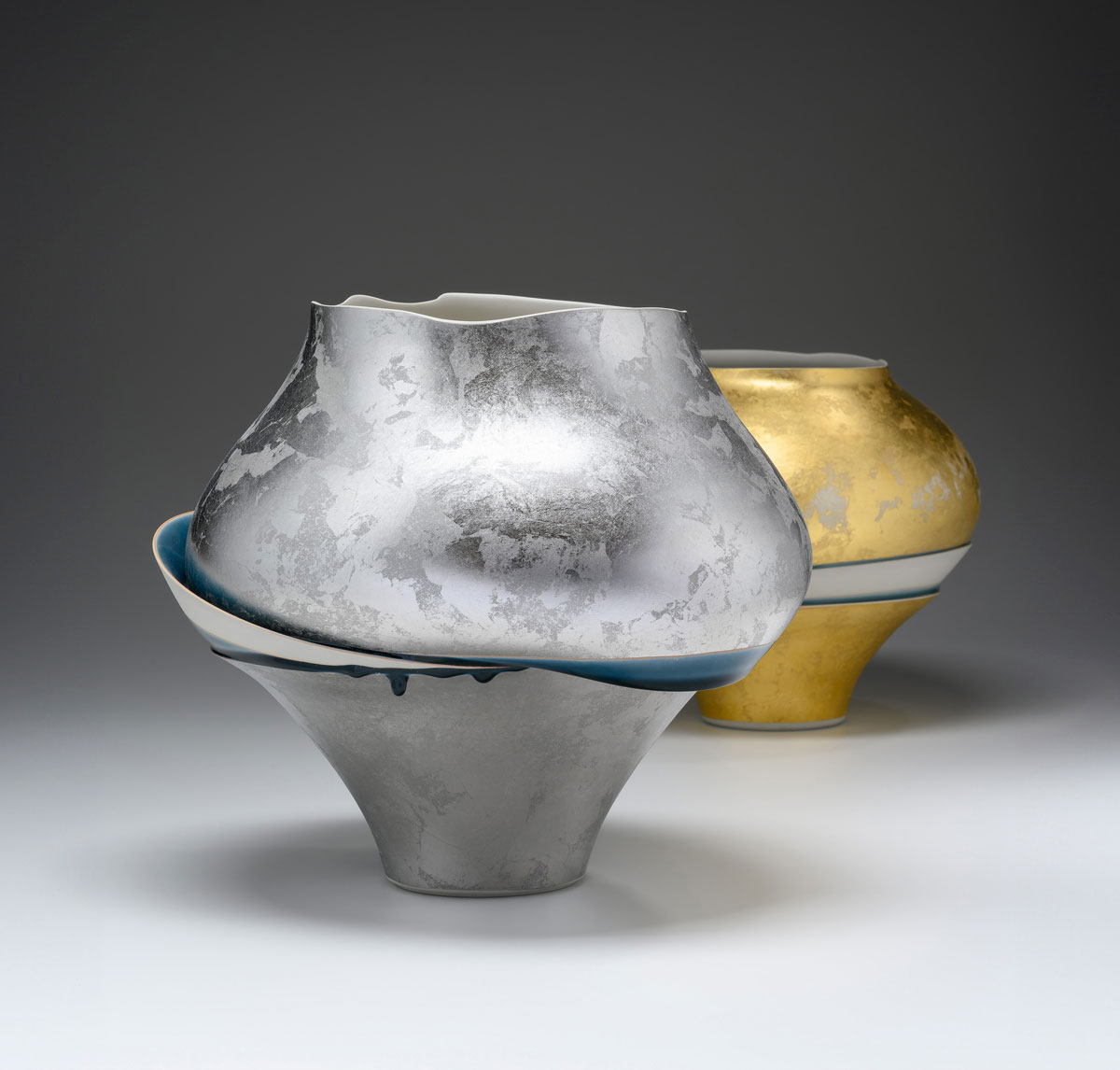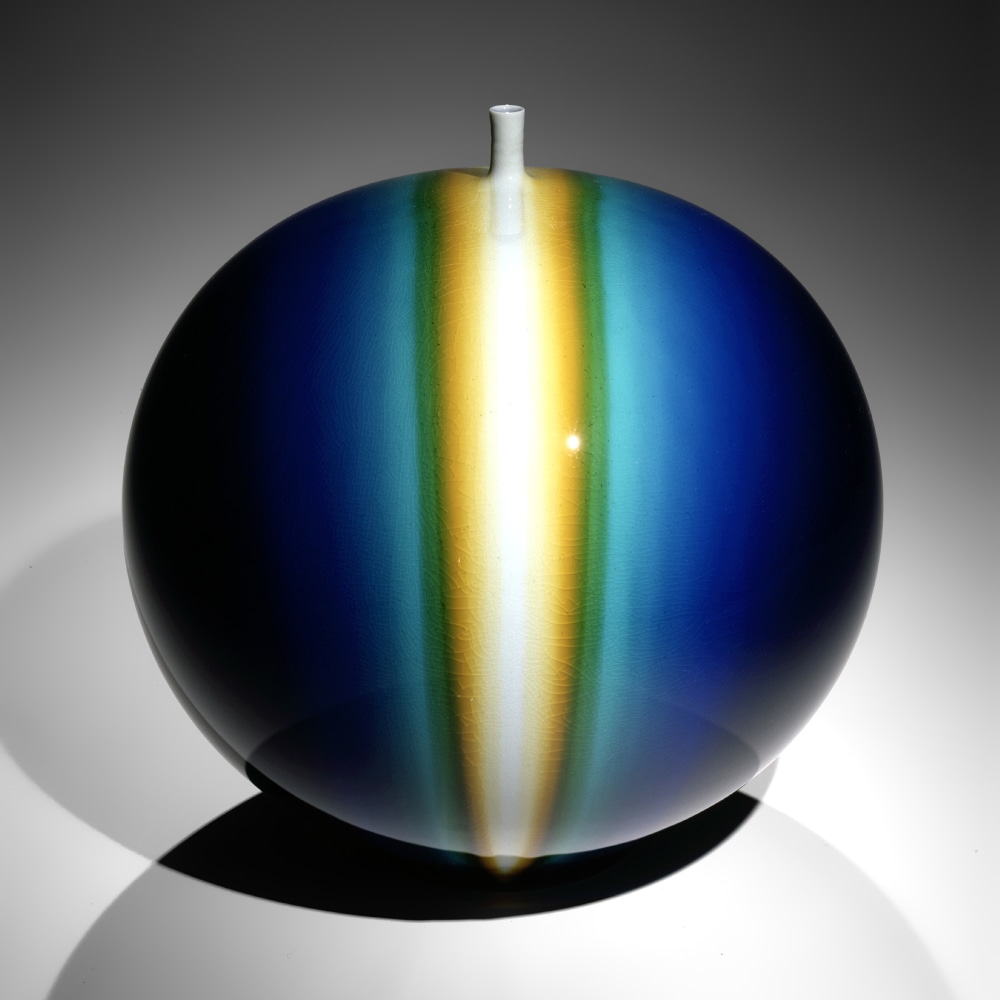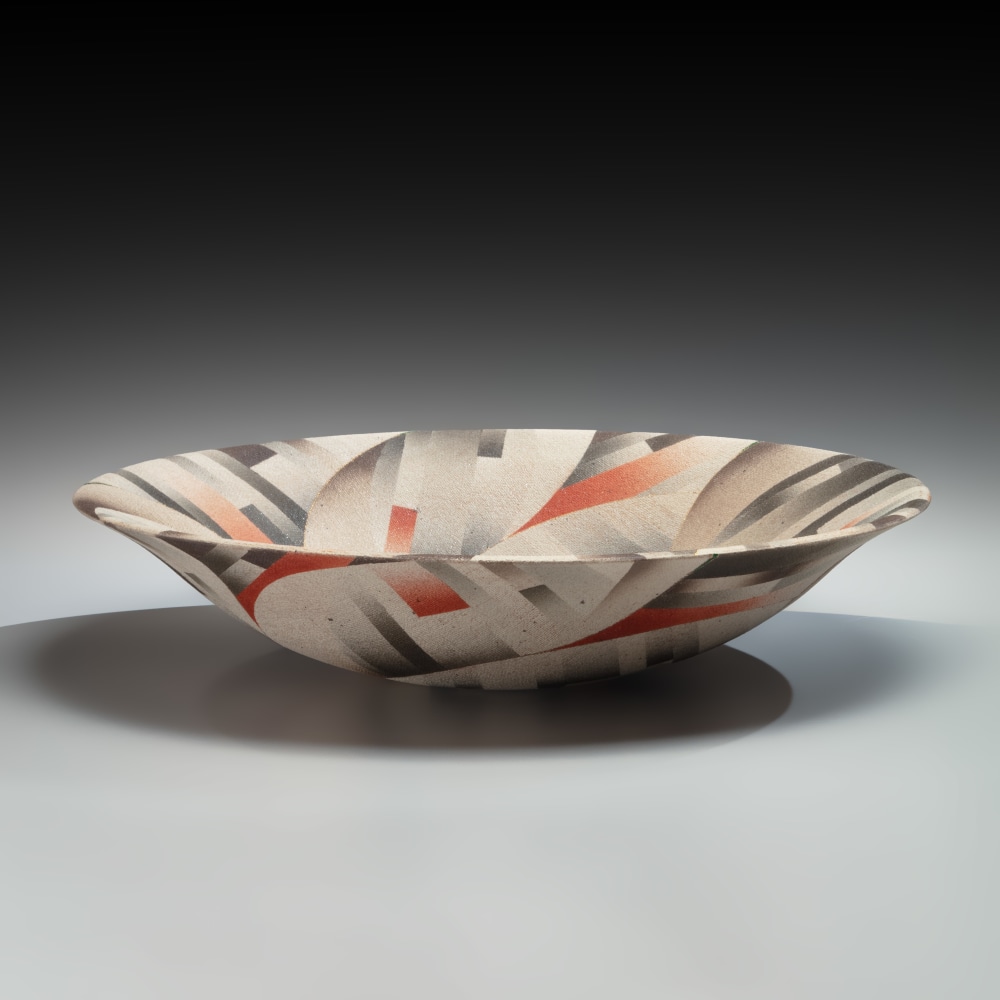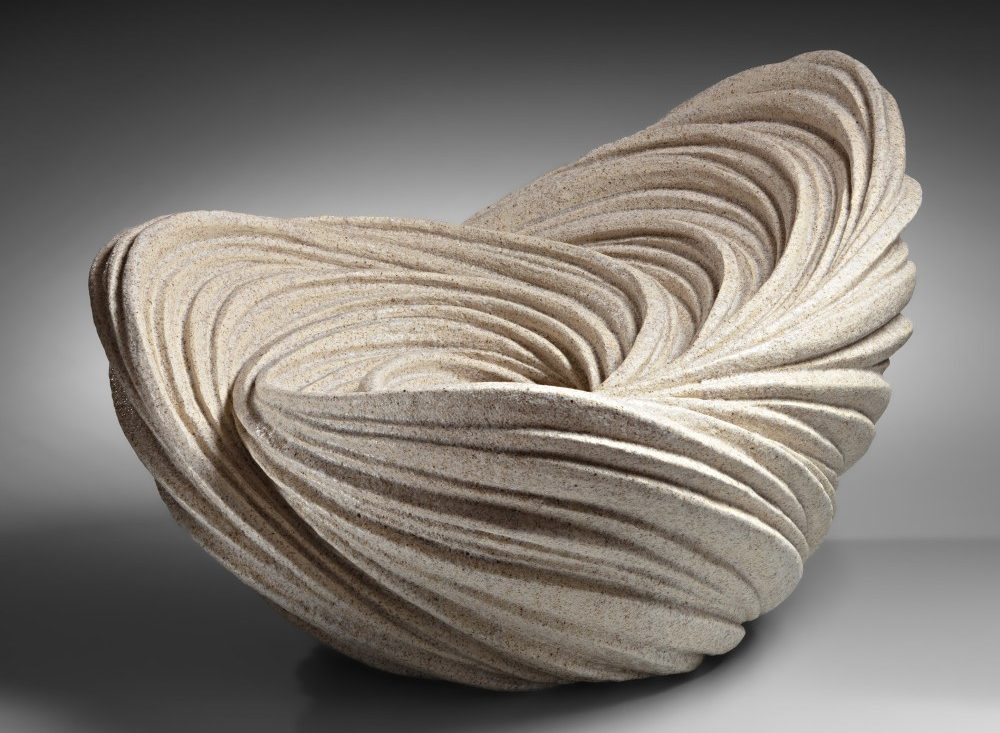UPCOMING EXHIBITION
UNFURLING FORMS: New Work by Takemura Yuri
July 9 – August, 2025
Following her sold-out international debut in 2017, we are thrilled to announce the second major international solo show of the exciting young artist Takemura Yuri (b. 1980). In her new work, Takemura meditates on the ever-churning vicissitudes of life. This new series of teabowls represents an evolution of her earlier work. While maintaining her characteristic exuberant swirling forms and bold color palette, Takemura has introduced new textures of clay and glaze that convey the passing of time through their weathered appearance. She has also begun creating sculptural works that, in their twisting and branching forms, tell the story of a lifetime as it unfurls. She finds working with clay to be a form of self-reflection that allows her to process her lived experiences.
In many ways, her new series reflects both the joy and pain that Takemura has experienced over the past few years, and the ways her aesthetic sensibilities have evolved in response. In addition to giving birth to a daughter, she provided full-time care for her elderly father, a graphic designer who had long shaped her appreciation for art and sensitivity toward color, at the end of his life. A resident of Kanazawa, she also witnessed firsthand the devastating impact of the 2024 Noto Peninsula Earthquake, which resonated with her own experience caring for her father. She was particularly struck by the image of wreckage filling Kanazawa’s inner sea. Gazing out at the detritus, much of which was wood, she realized that even that had a past as something rooted and alive. She imagined its future, transformed by the force of the waves into a new form with its own beauty and energy. This is the inspiration behind her new body of work.
While she continues her focus on the form of the teabowl, she has also found a new avenue for expression in sculpture. This has given her an opportunity to experiment with forms and has inspired her to reconsider her understanding of functionality in ceramics.
Still early in her career, Takemura’s works have garnered numerous accolades and been acquired by prestigious institutions internationally. They can be found in the collections of the Asian Art Museum in San Francisco and the Minneapolis Institute of Art, among others.
To learn more, click here.
RECENT EXHIBITION
Giving Form to Color: New Work by Sawada Hayato
May 8 – June 20, 2025
The long-anticipated international solo debut for artist Sawada Hayato (b. 1978), Giving Form to Color features exciting new works created exclusively for this exhibition. Hailing from Kasama, Ibaraki, just north of Tokyo, Sawada creates ceramic vessels in the tradition of the Kantō region’s most renowned past ceramic masters, Kamoda Shōji and Wada Morihiro. Although Sawada never met either Kamoda or Wada, he shares these seminal figures’ unique approach to the unity of pattern, form, and material, leading some art critics to describe the three artists as forming an exciting new Kantō ceramic lineage.
Sawada’s unique forms—which can be angular and multi-planar or rounded and curvilinear—are further highlighted by the application of boldly contrasting surface patterns, which are themselves richly textured. The process for creating these works is incredibly precise and time-consuming. Sawada hand-builds his ceramic forms before slip-glazing unmasked areas and incising their surfaces. He employs a technique that he calls nama-zōgan, or “raw inlay,” in which he inlays his vessels with black slip prior to bisque firing. He then masks the surface and applies layers of glaze and slip-glaze. Occasionally, he employs an unctuous feldspathic glaze, which develops an organic, crevassed texture when fired. Each vessel requires multiple firings at specifically calibrated temperatures. Once completed, Sawada’s vessels come to life as three-dimensional abstract paintings.
In describing his approach to ceramic art, Sawada uses the language of classical music, another passion of his. Just as musicians bring centuries-old scores to life by infusing the music with their own contemporary sensibilities, Sawada creates ceramics that exude modernity while employing the ancient techniques of hand-building, slip glazing, and inlay, Sawada’s ceramics nevertheless exude modernity. Through the form, pattern, and texture of his ceramic vessels, Sawada seeks to create narrative unity: “The philosophy at the core of my ceramics is storytelling. The vessels that emerge from there, that spring forth from that seed… I invite you to experience the textures and colors that can only be achieved in fired clay.”
Although his father is also a ceramist, Sawada was first inspired to take up the medium of clay out of a desire to make something radically different. He is largely self-trained, having never formally apprenticed or trained in ceramics in a university setting. Still early in his career, Sawada’s work can be found in the collection of the Crocker Art Museum, Sacramento, CA in the United States and the Ibaraki Ceramic Art Museum in Japan.
The exhibition features over thirty works created exclusively for this show.
To learn more, click here.
RECENT ASIA WEEK NEW YORK EXHIBITION
BEYOND THE SURFACE: The Unity of Form and Pattern in the Work of Wada Morihiro (1944-2008)
March 13 – April 25, 2025
BEYOND THE SURFACE: The Unity of Form and Pattern in the Work of Wada Morihiro (1944-2008), an exhibition fifteen years in the making, is the first comprehensive retrospective for this seminal clay master. It showcases seventy works, most acquired directly from the estate of the artist, representing nearly all of his diverse patterns on his ever-changing forms. Eleven of these works, including two unique entwining-vine patterned vessels previously unseen outside Japan, were intended for his 2008 solo exhibition at our gallery–a show that would have been Wada’s first comprehensive retrospective–– had it not been for his untimely passing. Fortunately, the Wada family reserved these works and many others and then encouraged our gallery to host this important exhibition in New York. A bilingual, fully illustrated, scholarly book with essays by four leading Japanese scholars accompanies the exhibition and is now available for purchase.
To learn more, click here.
Recent Acquisitions
We welcome you to view our recent acquisitions currently on view in the gallery and online.
To learn more, click here.
ZOOM GALLERY TALKS AVAILABLE TO VIEW
Beyond the Surface: The Unity of Form and Pattern in the Work of Wada Morihiro
Thursday, February 27 from 5-6:30 pm EST
Our recent webinar focused on Wada Morihiro (1944-2008), one of Japan’s most respected ceramists. Regarded as the successor to the legendary Kamoda Shōji, Wada’s exceptional oeuvre remains a stand-out among his contemporaries. His sold-out exhibitions were held not only at department store venues but also at fine art galleries with astonishing price tags during Japan’s “Bubble” era in the 1990s, a remarkable feat for a ceramic artist. Now major works have entered the collections of prestigious museums internationally. Panelists placed his work within the broader context of Japanese twentieth-century ceramic history and explore Wada’s career and process.
PANELISTS:
Meghen Jones, Associate Professor of Art History in the School of Art and Design at Alfred University
AaronRio, Tateuchi Foundation curator of Japanese and Korean Art at the Seattle Art Museum
SugiyamaMichio, Former Deputy Secretary-General of Shigaraki Ceramic Cultural Park
NicolleBertozzi, PhD candidate at Columbia University in medieval and early modern Japanese history
Moderated by Joan Mirviss
To view the recording of this talk, please click here.
Toshiko Takaezu: Her Journey
Recorded on Thursday, September 26, 2024 at 5pm EDT
TOSHIKO TAKAEZU (1922-2011) was a celebrated and innovative Hawaiian-American ceramic artist who combined inspiration from her cultural heritage with Western contemporary art styles to create her unique, dynamic aesthetic. Initially, Takaezu produced utilitarian ceramics that evolved into her signature stacked, totemic standing, closed-vessel forms. She often displayed her powerful, boldly painted works together with her fiber hangings and paintings, artfully designing highly personal installations inviting conversations between the differing media.
During her lifetime, Takaezu was honored with multiple museum exhibitions and today her works can be found in the permanent collections of over 65 international museums including The Art Institute of Chicago; Los Angeles County Museum of Art; Metropolitan Museum of Art; Museum of Fine Arts, Boston; National Museum of Modern Art, Kyoto; and the Shigaraki Ceramic Cultural Park.
We hosted this panel discussion with the scholars and curators who produced the current, major retrospective exhibition Toshiko Takaezu; Worlds Within, now traveling the country and authored its accompanying thorough, scholarly publication.
PANELISTS:
Glenn Adamson, scholar and curator
Elisabeth Agro, Nancy M. McNeil Curator of Modern Contemporary Craft and Decorative Arts
Darlene Fukuji, Board Member, Toshiko Takaezu Foundation and grandniece of the artist
Carolyn Herrera-Perez, Curator of Glass and Ceramics, Chazen Museum of Art
Kathryn Goffnett, Associate Curator, Cranbrook Art Museum
Moderated by Joan B Mirviss
To view the recording of this talk, please click here.
Art of the People: Exploring the Mingei Film Archive
Recorded on Thursday, April 18, 2024 at 5pm EDT
Perhaps one of the best-known aspects of Japanese ceramics in the West remains the Mingei folk art movement and its leading proponents, Hamada Shōji and Bernard Leach. Because of their advocacy and publicly facing roles, aided greatly by the medium of film, the timeless qualities of Mingei have figured prominently in the perception of Japanese art in the West throughout the twentieth century. For this unique ZOOM Gallery Talk, filmmaker Marty Gross shares with us his extraordinary mission to restore, record, preserve, and archive the films of and about Mingei from the early twentieth century in his project, The Mingei Film Archive. He will share with us rare footage of prewar Japan and of pottery production in centers such as Tamba and Mashiko. As a potter himself, Marty Gross shares with us how the Mingei Film Archive developed and how his personal journey merged his two great artistic interests to create this remarkable and irreplaceable resource for ceramics and for Japanese art lovers.
Panelist:
Marty Gross, filmmaker and founder of The Mingei Film Archive, based in Toronto, Canada
Moderated by Joan Mirviss
To view the recording of this talk, please click here.
About the Gallery
With more than forty-five years of experience, Joan B. Mirviss is a pillar in the field of Japanese art. As a dealer, scholar, curator, and advisor, she has been the driving force championing the top Japanese clay artists, who she represents exclusively, and whose works she has placed in major museums around the globe. Widely published as a highly respected expert, Mirviss has built many institutional and private collections of Japanese art. JOAN B MIRVISS LTD exhibits modern and contemporary Japanese ceramics, ukiyo-e, and Japanese paintings from its exclusive Madison Avenue location in New York City.


